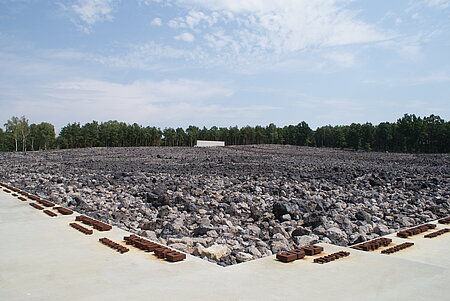Organisers of the excursion
Dirk Rupnow Historian, professor at the Department of Contemporary History and currently dean of the Faculty of Philosophy and History, University of Innsbruck (AT)
Barbara Hausmair Archaeologist, assistant professor at the Department of Archaeology, University of Innsbruck (AT)
Bettina Habsburg-Lothringen Management team, Museumsakademie Joanneum, Graz (AT)
Holocaust sites in Poland
Holocaust sites in Poland


Image Credits
Date
18.09. - 24.09.2023
Location
Museumsakademie Joanneum
Meeting point
Auschwitz, Krakau, Bełżec, Majdanek, Lublin, Sobibor, Treblinka, Warschau (PL)
Costs
950 € (The participation fees include bus transfer and hotel accommodation incl. breakfast for the entire duration of the event.)
Registration
Please register until 30 June 2023 in advance by e-mail or via our registration form. Registrations after 30 June can only be accepted in exceptional cases.
External registration
Show all
About the
Event
The global remembrance of the Holocaust has undergone profound changes over the past two decades. This can be seen, for instance, in the memorials for the victims of German mass crimes and their design. On the excursion, we will visit the major Holocaust sites in Poland: the former Nazi concentration and extermination camps of Auschwitz and Lublin-Majdanek as well as the former locations of the “Operation Reinhardt” extermination centres (Belzec, Sobibor, and Treblinka), where the systematic murder of Jews in the General Government district of German-occupied Poland took place during the Second World War. The memorials there have been subjected to a wide range of transformations in recent years. Archaeological investigations and finds as well as the spatial turn in history are playing an ever-greater role in these changes. Questions concerning the specific spatial structures of scenes of the crime, material remains, or the location of mass graves are not only of interest to academic research and debate. They are also part of discussions on remembrance, within the conflicting priorities of which the issue of how to deal with former Nazi sites from a conservational, design, and political perspective is negotiated. On our trip, we will examine the conflicting priorities of sites, materiality, and remembrance, with a specific focus on how the different memorials came to be as well as on the material and spatial dimensions of remembrance.



















